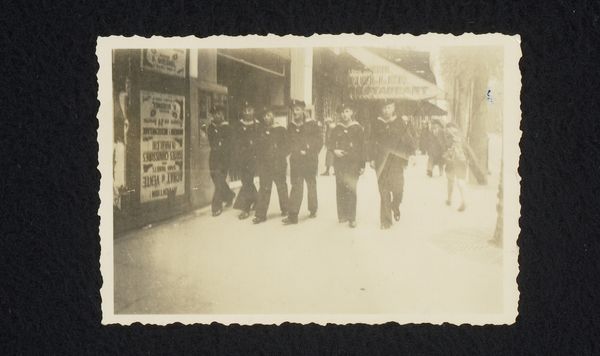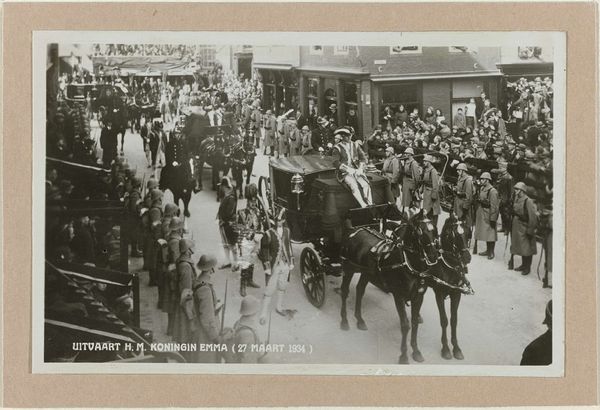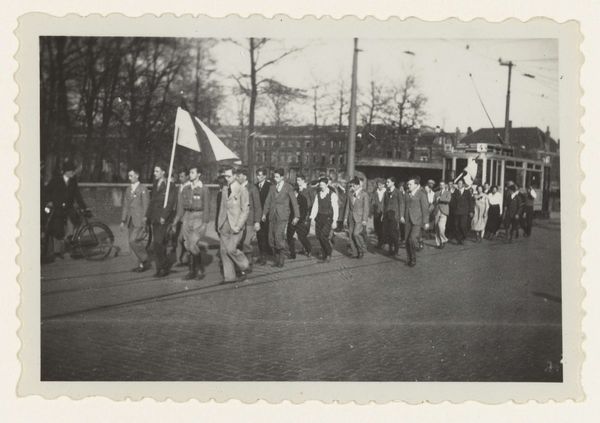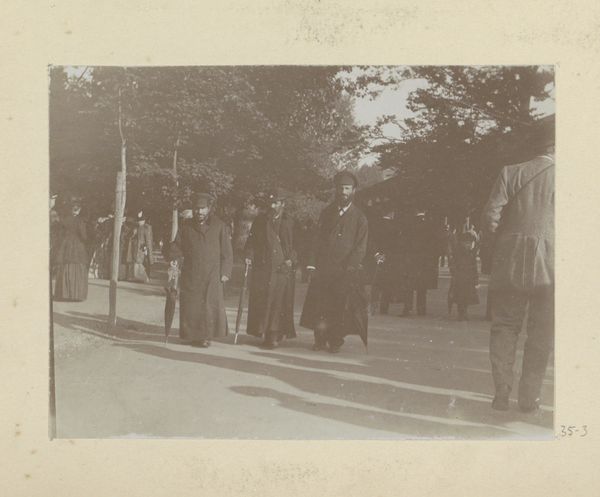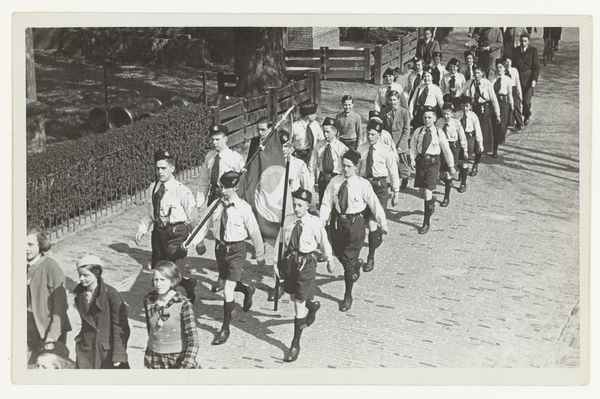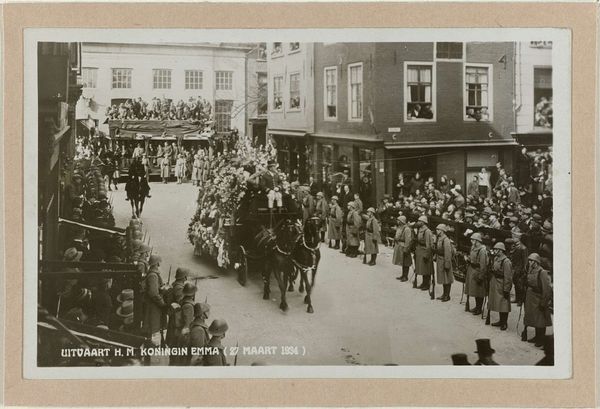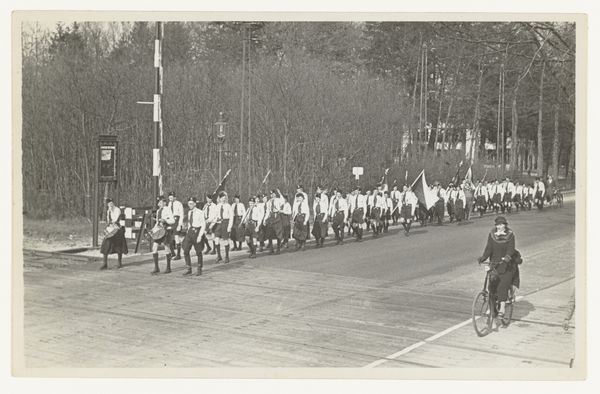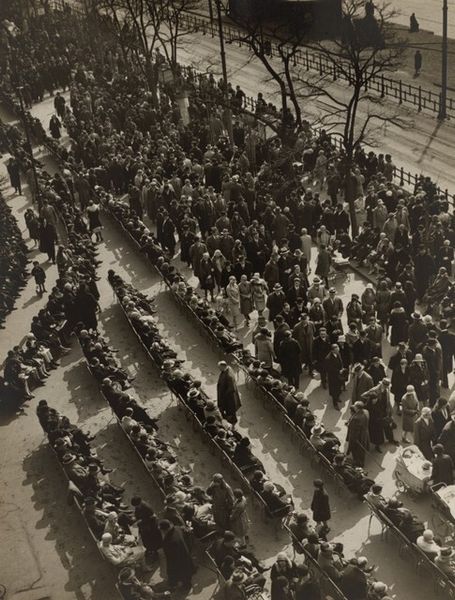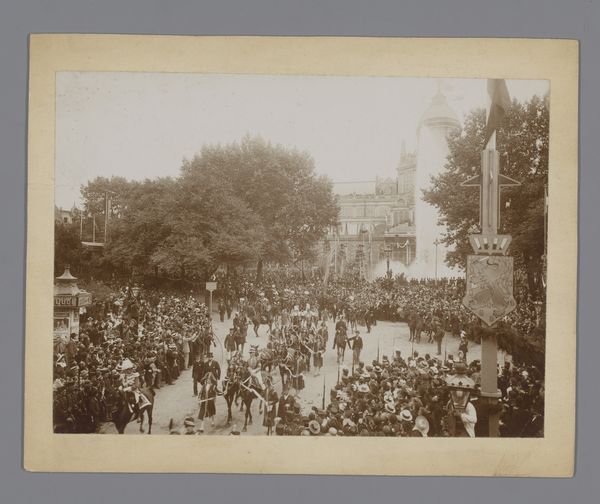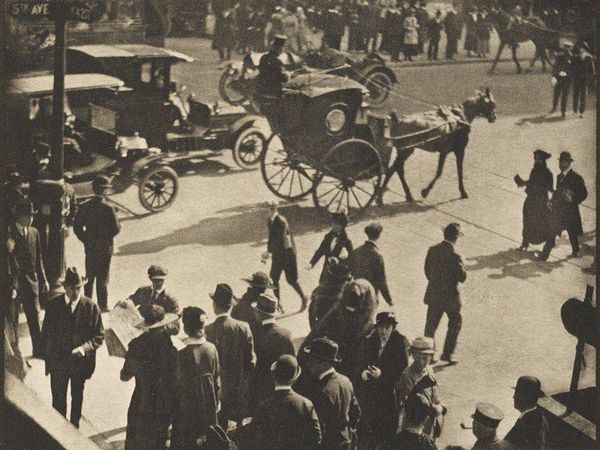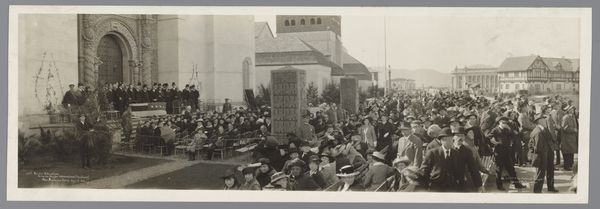
Harmonie 'Kunst en Strijd' in de Bilderdijkstraat, op weg naar de ijsclub Possibly 1930 - 1935
0:00
0:00
photography, gelatin-silver-print
#
portrait
#
archive photography
#
street-photography
#
photography
#
historical photography
#
gelatin-silver-print
#
modernism
Dimensions: height 90 mm, width 140 mm
Copyright: Rijks Museum: Open Domain
Curator: This gelatin silver print, titled "Harmonie 'Kunst en Strijd' in de Bilderdijkstraat, op weg naar de ijsclub" might date from the early 1930s, attributed to W. Fortuin. It seems to capture a parade. Editor: My first thought? The feeling is intensely communal, almost celebratory, but there's also this undeniable austerity in the grayscale tones. It speaks of a very specific historical moment. Curator: Precisely! The marchers, many carrying flags and instruments, become embodiments of "Kunst en Strijd"—Art and Struggle. This resonates deeply. Such parades were symbolic acts to consolidate communal ideas. Can you see the blend of social harmony and implied defiance? Editor: Definitely. I notice the children too; a young boy and a girl featured prominently. Their presence feels intentional. Are they symbolic of the future, or perhaps a visualization of the stakes of this "struggle"? There’s an implied continuity here across generations, almost indoctrinating these children. Curator: Possibly both. Considering that it's an ice club, it probably had very solid political beliefs in this historical time. The symbols carried on the banners—even partially obscured— hint at an identity formation through cultural practice that's really interesting to me. The visual echoes of the flag are quite profound! Editor: I agree. Considering this scene within its likely social context—the interwar period with its burgeoning political movements—it is an organized front marching along what looks like tram rails that divides the people watching the parade from the marchers, almost separating them into classes or positions of status. Who has a voice, who is following along? Curator: I'm interested in this theme in historical procession in visual and literary artworks that emphasize solidarity, creating social solidarity to the concept of continuity and identity across different regions and cultures. Editor: For me, situating it in a discourse that asks urgent questions about how community, identity, and belonging were being shaped, contested, and visualized, offers up a more contemporary understanding of this artwork.
Comments
No comments
Be the first to comment and join the conversation on the ultimate creative platform.

